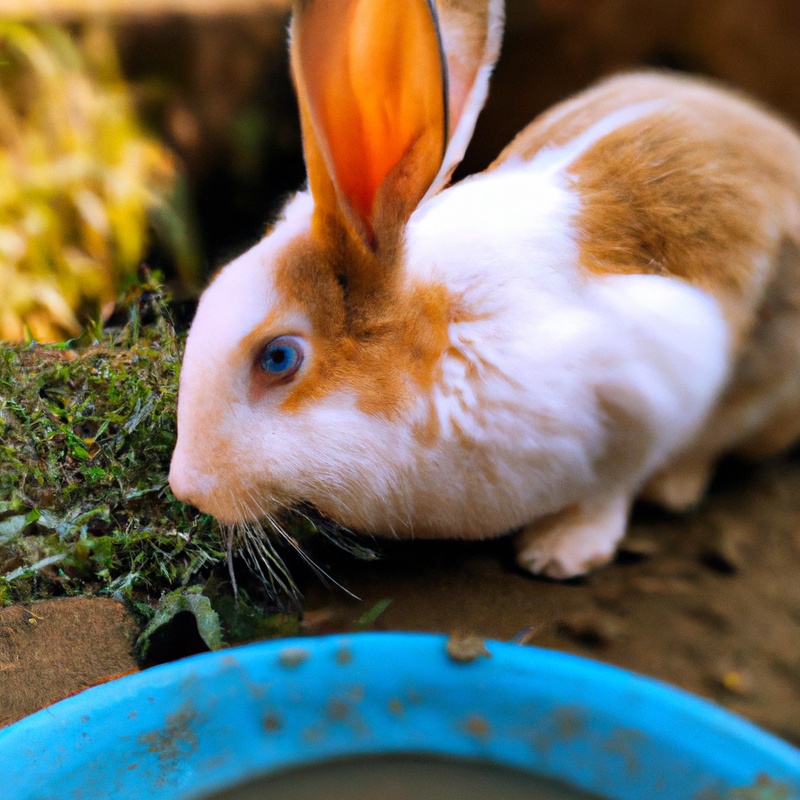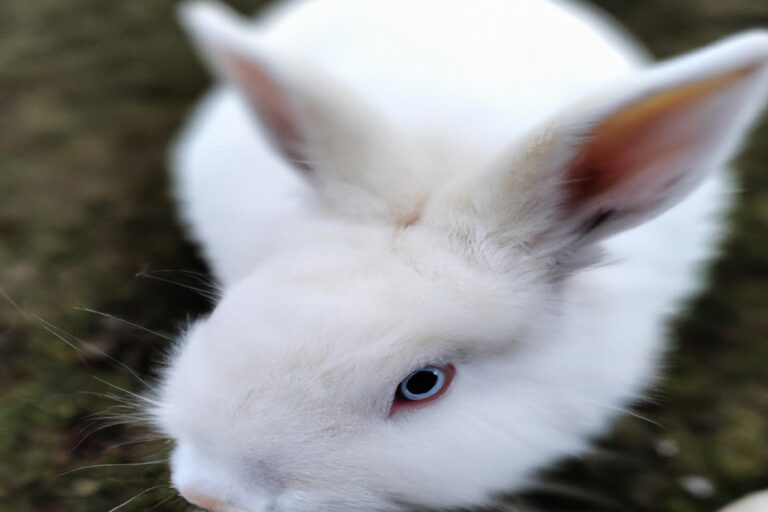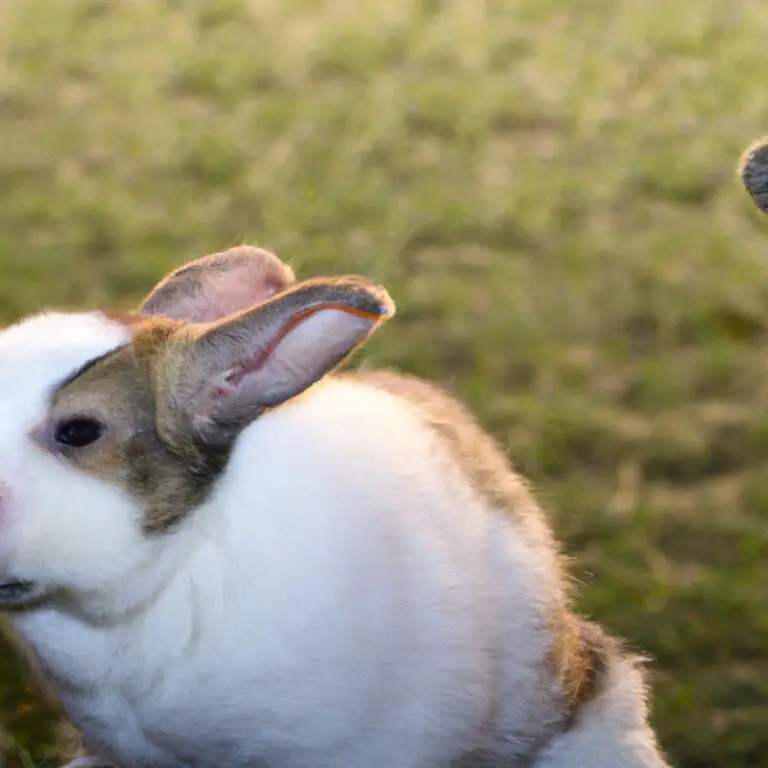Rabbit Training 101: Teaching Tricks, Litter Training, And More
Key Takeaways:
- Patience is key when training rabbits, as they are intelligent but may take time to learn tricks and behaviors.
- Positive reinforcement, such as rewards and praise, is a powerful tool for motivating rabbits during training.
- Litter training is possible for rabbits and can greatly simplify the cleaning process of their living area.
- Consistency and regular training sessions are crucial for successful rabbit training outcomes.
Hey there, rabbit enthusiasts! Have you ever wondered if rabbits are trainable?
Well, the answer is a resounding yes! Rabbit training can be a fun and rewarding experience for both you and your furry friend.
In this blog article, we will delve into the world of rabbit training and explore essential tools, basic obedience training, teaching fun tricks, litter training, overcoming challenges, advanced techniques, and answer your frequently asked questions.
So, get ready to hop into the wonderful world of rabbit training, where you’ll discover that these adorable creatures are capable of much more than meets the eye!
| Aspect | Trick Training | Litter Training | Other Training |
|---|---|---|---|
| Benefits | Improves bond with the rabbit | Reduces mess and promotes cleanliness | Enhances mental stimulation and problem-solving abilities |
| Difficulty Level | Can be moderately challenging | Relatively easier with consistent reinforcement | Varies based on the desired trick |
| Training Techniques | Positive reinforcement with treats and clicker training | Setting up litter boxes and minimizing soiled areas | Step-by-step shaping and targeting methods |
| Time Investment | Requires consistent daily training sessions | Gradual process; may take a few weeks to months | Varies based on complexity of the trick |
| Tips | Avoid forcing the rabbit and provide rewards for positive behavior | Use rabbit-safe litter and place hay near the litter box | Break training into small steps and be patient |
Essential Tools and Supplies for Rabbit Training
To effectively train your rabbit, you’ll need a few essential tools and supplies. These include rabbit training treats, clickers and training tools, and a rabbit training cage or enclosure.
Rabbit Training Treats
Rabbit training treats play a vital role in motivating and rewarding your bunny during training sessions. Opt for small and bite-sized treats that are easy for your rabbit to eat and won’t disrupt their diet.
Healthy options include fresh herbs like parsley and cilantro, as well as small pieces of fruits like apples or berries.
Commercial rabbit treats made with natural ingredients can also be a good choice. Avoid sugary and high-fat treats, as they can negatively impact your rabbit’s health.
Always consult with a veterinarian before introducing new treats into your rabbit’s diet.
Clickers and Training Tools
Clickers are often used in rabbit training as a form of positive reinforcement.
They provide a distinct sound that the rabbit can associate with receiving a reward.
This helps to reinforce desired behaviors and make the training process more effective.
Other training tools that can be helpful include treats, target sticks, and tunnels for teaching agility exercises.
These tools can aid in teaching your rabbit tricks, improving their litter training, and overall enhancing their bond with you.

Rabbit Training Cages and Enclosures
Rabbit training cages and enclosures play a key role in creating a safe and effective training environment for your bunny. When choosing a cage or enclosure, opt for one that is spacious enough for your rabbit to move around comfortably.
Look for sturdy construction and secure latches to prevent escapes.
Additionally, consider adding features such as ramps, tunnels, or hiding spots to stimulate your rabbit’s curiosity and mental stimulation. Regular cleaning and maintenance are essential to ensure a hygienic and pleasant training space for your furry friend.
Basic Obedience Training for Rabbits
Establishing trust and bonding is essential for basic obedience training for rabbits.
Establishing Trust and Bonding with Your Rabbit
Establishing trust and bonding with your rabbit is essential for a strong and loving relationship.
Here are a few simple tips to help you build that connection:
- Spend quality time together: Set aside regular time to interact with your rabbit, whether it’s through gentle pets, interactive play, or simply sitting quietly with them. This will help them become comfortable with your presence and associate you with positive experiences.
- Offer treats and rewards: Use treats to reward your rabbit for good behavior, such as coming when called or using their litter box. This positive reinforcement will help them understand that you are a source of pleasure and trust.
- Approach gently and calmly: Rabbits can be easily startled, so make sure to approach them slowly and calmly. Avoid sudden movements or loud noises that may frighten them. This will help them feel safe in your presence.
- Speak softly and soothingly: Rabbits are sensitive to sound, so speaking to them in a gentle and soothing tone can help establish a sense of security and comfort. This will also help them get used to your voice.
- Respect their space: Give your rabbit their own designated area where they can retreat and feel safe. This could be a corner with their favorite toys, a cozy hideout, or a comfortable hutch. Respecting their personal space will show them that you value their boundaries.
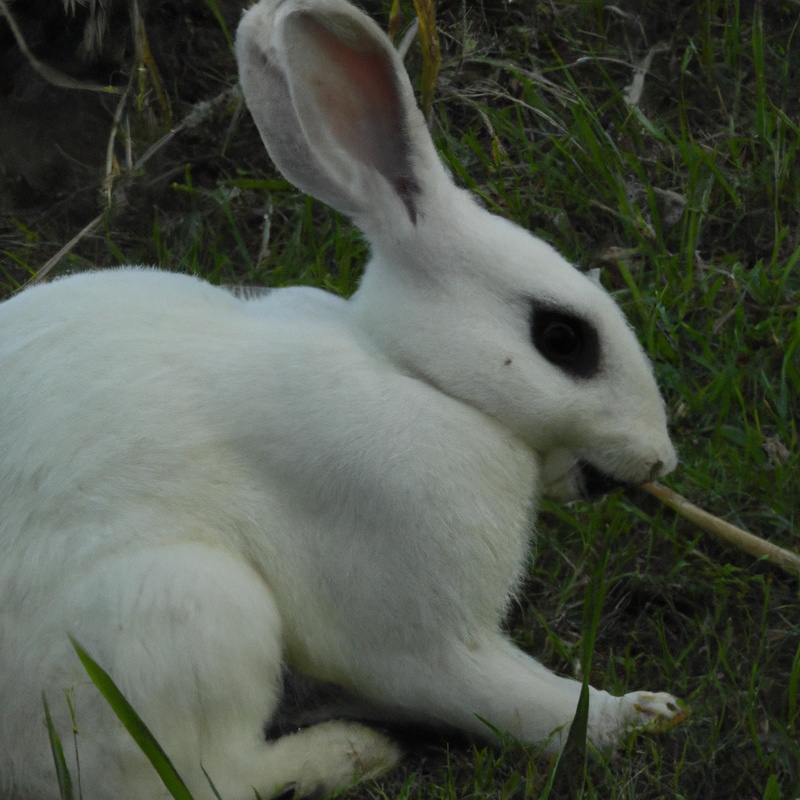
Training Commands, like “Come” and “Stay”
Training your rabbit to respond to commands like “Come” and “Stay” can be a fun and useful part of their obedience training. To teach “Come,” start by using a treat to encourage your rabbit to come towards you while saying the command.
Repeat this process, gradually increasing distance and distractions.
For “Stay,” begin by asking your rabbit to sit or lie down, then reward them for staying in that position. Gradually increase the duration and distance of the stay.
Consistency and positive reinforcement are key to successful training.
Teaching Your Rabbit to Respond to Its Name
Teaching your rabbit to respond to its name is a simple and rewarding process. Start by choosing a name that is short, distinct, and easy to pronounce.
Use your rabbit’s name consistently whenever you interact with them.
Pair their name with positive reinforcement, such as treats or praise, to create a positive association. Repeat this training exercise daily in a quiet, distraction-free environment.
With patience and consistency, your rabbit will learn to recognize and respond to their name.
Teaching Fun Tricks to Your Rabbit
Teaching Fun Tricks to Your Rabbit is a great way to bond with your furry friend and keep them mentally stimulated.
Training Your Rabbit to Jump through Hoops
Training your rabbit to jump through hoops can be a fun and entertaining activity. Here are some steps to help you achieve this trick:
- Start with a small hoop and place it on the ground.
- Encourage your rabbit to investigate the hoop by placing some treats near it.
- Once your rabbit is comfortable near the hoop, hold a treat on the other side and encourage them to go through it.
- Gradually increase the height of the hoop as your rabbit becomes more confident.
- Use positive reinforcement, such as treats and praise, to reward your rabbit for successfully jumping through the hoop.
- Practice regularly to reinforce the behavior and help your rabbit become more proficient.
Remember to be patient and consistent with your training. Celebrate your rabbit’s progress and have fun with the process!
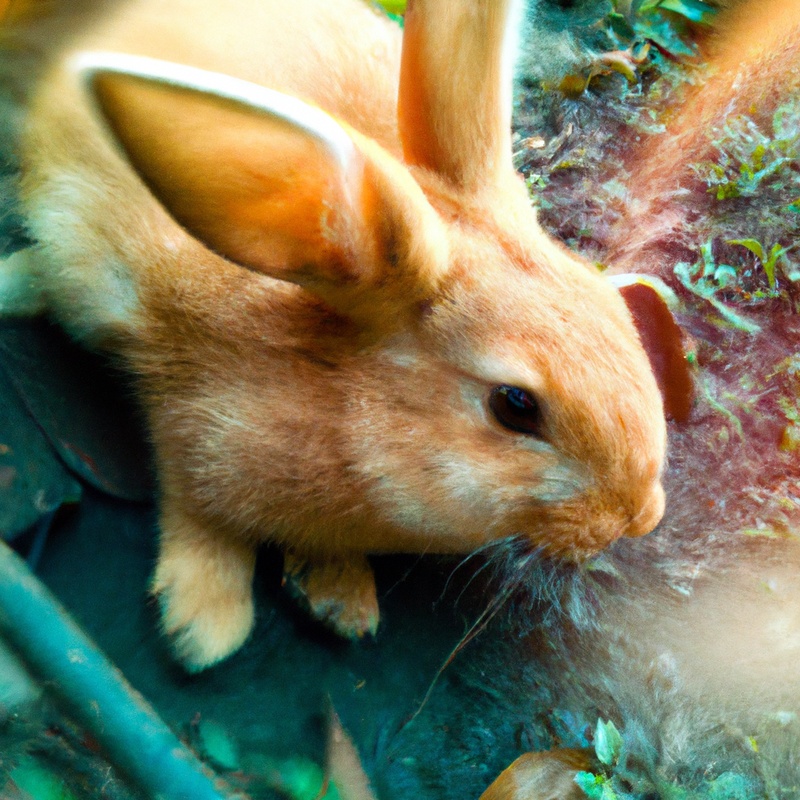
Teaching Your Rabbit to Spin or Turn
Teaching your rabbit to spin or turn can be a fun and rewarding exercise. Here are some simple steps you can follow:
- Start by using a treat or favorite food item to get your rabbit’s attention.
- Hold the treat in front of your rabbit’s nose and slowly move it in a circular motion, encouraging them to follow it with their head.
- As your rabbit starts to follow the treat in a circular motion, give them verbal praise and a small reward.
- Repeat this process several times, gradually increasing the speed of the movement, until your rabbit starts to spin or turn on command.
- Once your rabbit is consistently spinning or turning, you can introduce a hand gesture or verbal cue to associate with the behavior.
Remember to be patient and reward your rabbit for their efforts. With consistent practice and positive reinforcement, you’ll be amazed at what your rabbit can learn!
Training Your Rabbit to Fetch
Training your rabbit to fetch can be a fun and rewarding activity. Here’s how you can do it:
- Start with a favorite toy or treat. Find something that your rabbit enjoys playing with or munching on.
- Hold the toy or treat in front of your rabbit’s nose to get their attention. Then, toss it a short distance away.
- Encourage your rabbit to go after the toy or treat by using a verbal cue like “fetch” or making a clicking sound.
- Once your rabbit picks up the toy or treat, reward them with praise and a small treat.
- Gradually increase the distance you throw the toy or treat, and repeat the process. With time and practice, your rabbit will start bringing the item back to you.
Remember to keep training sessions short and positive, and always reward your rabbit for their effort. Patience and consistency are key when teaching your rabbit to fetch.
Litter Training Your Rabbit
Litter training your rabbit is essential for a clean and odor-free home.
Benefits of Litter Training for Rabbits
Litter training your rabbit comes with several benefits. First, it helps keep your rabbit’s living space clean and odor-free.
Second, it makes it easier for you to clean up after your rabbit and maintain hygiene.
Third, it helps prevent your rabbit from ingesting harmful substances like litter or feces. Additionally, litter training can make it easier for you to bond with your rabbit, as they will feel more comfortable and secure in a clean and organized environment.
Choosing the Right Litter Box and Litter
Choosing the right litter box and litter is important for your rabbit’s comfort and hygiene.
- Opt for a litter box that is spacious enough for your rabbit to move comfortably, with low sides for easy access.
- Select a litter that is safe for rabbits, such as paper-based or hay-based litters, avoiding clumping or scented litters.
- Place the litter box in a quiet, easily accessible area, away from your rabbit’s sleeping and eating areas.
- Clean the litter box regularly to maintain cleanliness and minimize odors.
Steps to Successfully Litter Train Your Rabbit
To successfully litter train your rabbit, start by setting up a designated litter area with a litter box filled with rabbit-safe litter. Place some of your rabbit’s droppings in the litter box to help them understand its purpose.
Whenever you see your rabbit starting to use the box or showing signs of needing to go, gently place them in the litter box.
Reward them with praise or a treat when they use the litter box correctly. Regularly clean the litter box to maintain cleanliness.
Be patient and consistent with the training process, and your rabbit will likely catch on eventually.
Overcoming Challenges in Rabbit Training
Overcoming Challenges in Rabbit Training: Dealing with Destructive Behaviors, Addressing Aggression in Rabbits, and Handling Fearful or Anxious Rabbits.
Dealing with Destructive Behaviors
Dealing with destructive behaviors can be quite challenging when training your rabbit. However, with patience and the right approach, you can overcome these issues.
Here are a few tips:
- Provide appropriate chewing options like hay and safe toys to redirect their destructive behavior.
- Bunny-proof your home by keeping cords and valuable items out of reach.
- Give them plenty of mental and physical stimulation through playtime and interactions.
- Consistently reinforce positive behaviors using rewards and praise.
- Consider seeking guidance from a professional animal behaviorist if the destructive behaviors persist.
Remember, addressing destructive behaviors takes time and effort, but with consistency and patience, you can help your rabbit develop better habits.
Addressing Aggression in Rabbits
Addressing aggression in rabbits requires patience and understanding. First, identify the root cause of the aggression, such as fear, territoriality, or stress.
Provide a safe and spacious living environment for your rabbit and offer plenty of mental and physical stimulation to prevent boredom.
Always approach your rabbit calmly and gently, avoiding sudden movements. Consider neutering or spaying your rabbit, as this can often help reduce aggression.
Consult with a veterinarian or an experienced rabbit behaviorist for personalized advice and guidance.
Handling Fearful or Anxious Rabbits
Handling fearful or anxious rabbits can be challenging, but with patience and understanding, you can help them feel more comfortable. Here are a few tips:
- Create a safe environment: Provide hiding places, like cardboard boxes or tunnels, where your rabbit can retreat when feeling scared.
- Slow and gentle introductions: Approach your rabbit calmly, speak softly, and avoid sudden movements. Give them time to adjust to new situations.
- Positive reinforcement: Use treats and praise to reward your rabbit for calm behavior. This will help build trust and confidence over time.
- Gradual exposure: Introduce new experiences slowly, allowing your rabbit to approach at their own pace. For example, start with short, supervised interactions with other pets or visits to new environments.
- Consult a veterinarian: If your rabbit’s fear or anxiety persists, a vet can provide guidance and rule out any underlying health issues.
Remember, every rabbit is unique, and it may take time to see progress. Be patient and compassionate as you work with your furry friend to overcome their fears.
Advanced Training Techniques for Rabbits
Take your rabbit’s training to the next level with advanced techniques. Heading 1: Agility Training for Rabbits
Agility Training for Rabbits
Agility training for rabbits can be a fun and stimulating activity.
To get started, set up a small obstacle course with tunnels, jumps, and ramps.
Use positive reinforcement, such as treats and praise, to reward your rabbit for successfully completing each obstacle.
Start with simple tasks and gradually increase the difficulty level.
Remember to provide a safe and secure environment for training, and always be patient and consistent with your rabbit.
Enjoy the training process and have fun bonding with your furry friend!
Teaching Your Rabbit to Walk on a Harness
Teaching your rabbit to walk on a harness can be a fun and rewarding experience.
Here’s a simple step-by-step guide to get you started:
- Choose the right harness: Look for a harness specifically designed for rabbits. Make sure it’s the right size and adjustable for a comfortable fit.
- Introduce the harness gradually: Allow your rabbit to get familiar with the harness by showing it to them and letting them sniff it. Give them treats to create a positive association.
- Let them wear the harness indoors: Once your rabbit is comfortable with the harness, start by putting it on indoors for short periods. Make sure it’s not too tight or too loose.
- Start with short, supervised walks: Take your rabbit outside in a safe and secure area, such as a fenced yard. Keep the initial walks short and supervised, gradually increasing the duration as they get more comfortable.
- Offer treats and praise: Reward your rabbit with treats and praise during and after the walks to reinforce the positive experience. This will also help them associate the harness with something enjoyable.
- Be patient and consistent: Every rabbit learns at its own pace, so be patient and consistent with your training. Stay calm and avoid forcing your rabbit to do something it’s not ready for.
Remember, not all rabbits may take to walking on a harness, and that’s okay.
Respect your rabbit’s preferences and always prioritize their comfort and safety.
Training Your Rabbit to Perform Complex Tricks
Training your rabbit to perform complex tricks can be a fun and rewarding experience.
Start by teaching your rabbit basic commands such as “come” and “sit.” Once your rabbit is comfortable with these commands, you can move on to more complex tricks like jumping through hoops or weaving through obstacles.
Be patient and use positive reinforcement techniques, such as treats and praise, to motivate your rabbit.
With consistent training sessions and lots of patience, your rabbit can learn to perform impressive tricks.
Frequently Asked Questions about Rabbit Training
How long does it take to train a rabbit?
Training a rabbit can take anywhere from a few days to several weeks, depending on the desired level of training and the individual rabbit’s personality. Basic obedience commands like “come” and “stay” can be taught relatively quickly with consistent practice and positive reinforcement.
Trick training and litter training may require more time and patience.
Keep in mind that each rabbit is unique, and training progress may vary. Regular training sessions and a calm, positive approach will help establish a strong bond with your rabbit and enhance the training process.
Can you train an older rabbit?
Yes, you can train an older rabbit.
While it may take a bit more time and patience compared to training a younger rabbit, older rabbits are capable of learning new behaviors and tricks.
Keep in mind that rabbits have their own personalities and learning ability, so it’s important to tailor the training to their individual needs.
Take small steps, use positive reinforcement, and be consistent with your training sessions.
With time and dedication, your older rabbit can surprise you with what they can learn.
Is it possible to train a wild rabbit?
Yes, it is possible to train a wild rabbit, but it can be more challenging than training a domesticated rabbit.
With patience, consistency, and positive reinforcement, you can teach a wild rabbit basic commands and tricks.
However, it’s important to remember that wild rabbits have their instincts and may not always respond as quickly or reliably as a domesticated rabbit.
Building a bond and trust with the rabbit is key to successful training.
Final Verdict
Rabbit training is not only possible but can also be an enjoyable and rewarding experience. By using essential tools and supplies such as treats, clickers, and cages, you can effectively train your rabbit in basic obedience commands and even teach them fun tricks.
Litter training your rabbit is also beneficial and can be accomplished with the right litter box and steps.
Overcoming challenges like destructive behaviors, aggression, and fear can be addressed with patience and understanding. Advanced training techniques, such as agility training and walking on a harness, can be explored once the basics are mastered.
In summary, rabbit training requires establishing trust and bonding, consistent commands, and positive reinforcement.
It takes time and patience, but with the right approach, you can successfully train your rabbit. Remember, every rabbit is unique, so adjust your training methods accordingly.
By developing a strong and positive relationship with your rabbit, you can create a well-behaved and happy companion.
So, get started on your rabbit training journey and enjoy the wonderful bond you’ll build with your furry friend.

